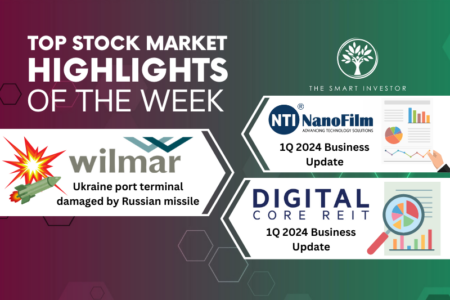Investors need to study competitive moats closely to determine if businesses have what it takes to continue growing over the long run.
The book “Why Moats Matter” from Morningstar helps to describe the different competitive moats in detail.
We started by introducing several different intangible moats in Part One.
Part Two then went on to describe four other types of competitive moats.
This discussion, however, will not be complete without looking at moat trends.
Moat trends assess how moats change and evolve, and are important because the business world is dynamic.
With the only constant being change, companies may witness their moats become stronger or weaker as time passes.
Should a company’s moat be eroded over time, it will have serious implications for the investor.
Morningstar uses three types of ratings – positive when the moat is strengthening or growing, negative when the moat is shrinking or declining, and stable when there is no discernible movement either way.
Let’s dig deeper into these three categories.
Positive moat trend
Companies with positive moat trends are those that have spent time, resources and effort in strengthening their competitive moat.
How do investors assess this?
The stronger moat will manifest itself as a higher return on invested capital, better margins and more healthy free cash flow generation over time.
The process to strengthen a moat may be active – an example is a company undertaking research to ensure a better service experience for clients and making their switching costs higher.
It may choose to strengthen its network of products and services by onboarding more suppliers and clients, thus boosting its network effect.
Some moat trends are positive due to passive events which the company has no direct control over.
Examples include a competitor (which offers a substitute product) going bust.
The industry in which the company is in could also be growing and attracting more attention.
Competing technologies may either fall by the wayside or be excluded from consideration, hence strengthening the company’s moat without it taking any active actions.
Negative moat trend
Eroding moats are a fairly common phenomenon due to the pace of change in today’s business world.
Companies that cannot swiftly adapt to changes risk seeing their competitive moats break down over time, exposing them to a competitive attack.
Management may also be complacent when times are good and rest on their laurels.
This may happen when a business has been in a dominant market position for years or even decades.
Rapid technological advancement can displace certain moats while replacing others.
An example is the rapid adoption of online news, causing print media to take a back seat and lose their pole position as the first choice for current news.
Healthier lifestyles and a growing awareness of diabetes may also lead to fewer people drinking sweetened sodas such as those sold by Coca-Cola (NYSE: KO).
Companies need to be constantly watchful and mindful of such potential shifts.
Stable moat trend
Stable moat trends are the exception rather than the rule these days.
The advent of the internet and rapid technological advancement is to blame for supplanting many competitive moats over the years.
However, it’s still possible to find companies in consumer goods industries with stable moat trends.
These are industries where the risk of technological disruption is low, and where the companies have also built up a loyal customer base that is unlikely to embrace new changes.
Some examples include popular toiletry brands by Procter and Gamble (NYSE: PG) and towels and tissue paper produced by Kimberly-Clark (NYSE: KMB).
These consumer giants have a superior mind share for their top brands that is unlikely to be dethroned anytime soon.
In the next part of this series, we look at several factors that influence moat trends and whether they translate into a company being more, or less attractive.
Our beginner’s guide to investing is finally here! Many investors took years to understand the principles inside, but you can have it all in one afternoon. If you have just started investing, download our free guide today so you can catch up quickly. Click here to download now.
Follow us on Facebook and Telegram for the latest investing news and analyses!
Disclaimer: Royston Yang does not own any of the companies mentioned.



